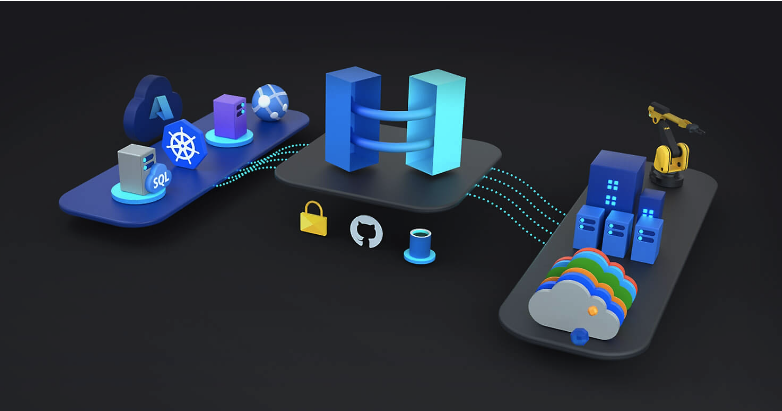Embracing the Cloud: NCSoft's Journey to Streamlined Collaboration
*Updated 7/13/23*
4 min read
cloudservuscom Oct 31, 2023 10:57:34 AM

Cloud infrastructures are only growing in complexity, given the increasingly interconnected nature of modern architectures, APIs, and interrelated services.
As the amount of cloud resources that need to be managed grows, organizations are turning to Infrastructure as Code (IaC) to address the complexity and interdependencies of cloud applications.
IaC delivers the tools, processes, and methodologies to streamline infrastructure management, mitigate risks, and enable the adoption of new technologies and cloud-based solutions.
The global IaC market has skyrocketed alongside cloud adoption and is expected to grow from $0.64 billion in 2021 to $4.45 billion in 2030.
Demand for IaC services is increasing to help drive IaC adoption and improvements so businesses can leverage the benefits of this approach without needing to implement and manage it themselves.
Infrastructure as Code (IaC) is a software engineering practice that involves coding and automation techniques to manage and provision infrastructure resources.
Instead of manually configuring servers, networks, virtual machines, clusters, services, and other infrastructure components, IaC allows you to define the appropriate state of your infrastructure in code and then use tools to create and maintain it automatically.
IaC fundamentally transforms how infrastructure resources are provisioned, configured, and managed in computing environments. It brings software development principles to infrastructure management, enabling consistency, automation, and scalability.
Imagine you’re using Lego blocks to build and manage your infrastructure. With a traditional approach, you’d manually piece together each block to create a structure using one block at a time. If you want to build the same structure elsewhere, you have to repeat this process from scratch, which is time-consuming and might lead to mistakes.
But with an IaC approach, you’d use a specific set of instructions (code) to build the structure. These instructions act as a blueprint that defines how the blocks should be arranged. Then whenever you need the same structure elsewhere, you can just follow the same blueprint, and the blocks will be assembled automatically in the exact way you want.
In IaC, there’s two distinct paradigms used to define and manage infrastructure resources:
A declarative approach in IaC focuses on describing the required state of the infrastructure without designating the exact steps necessary to achieve that state. In simple terms, you define the end result you want, and the system determines how to do it.
An imperative approach in IaC involves specifying the exact steps or commands that must be executed to achieve the required infrastructure state. It involves writing a sequence of commands that manipulate the infrastructure to arrive at the desired outcome.
Typically the use case, infrastructure complexity, and team preferences determine which approach is best. Declarative IaC is often popular because of its simplicity, automatic provisioning, idempotent operations, and ease of maintenance. But imperative IaC is frequently useful when granular control or customizations are required or when working with tools that follow a procedural-style execution. There’s also some IaC tools that use a hybrid approach so users can combine declarative and imperative components to obtain a balance between control and simplicity.
IaC has emerged as an indispensable tool that can enhance application performance and empower digital transformation.
IaC accelerates infrastructure provisioning and configuration processes, so you can quickly set up and tear down environments - enabling faster application development, testing, and deployment. This level of agility also accelerates your organization's ability to respond to changing customer demands and market dynamics.
IaC enables infrastructures to be standardized and defined in code, and this consistency minimizes the risks of configuration errors, discrepancies, and security gaps across different environments. Applications will behave more predictably and dependably across all development and production stages.
IaC enables you to scale your infrastructure resources up or down according to fluctuating demand. This scalability and versatility is a key advantage when dealing with scenarios like increased user traffic or business expansion because your infrastructure can grow seamlessly, minus any manual intervention or operational disruptions.
IaC promotes cost-effective provisioning because infrastructure needs are defined in code, which enables you to better allocate resources and optimize costs while eradicating unnecessary expenses. This also allows DevOps teams to work on mission-critical activities rather than manual tasks.
IaC reduces the likelihood of misconfigurations and security vulnerability via consistency, automation, and unified configuration. Also, by embedding security best practices into the code, you can ensure that security measures are uniformly applied throughout the entire infrastructure.
IaC code can be stored in version control systems that provide an audit trail. You can monitor modifications, roll back to previous configurations, and maintain a record of infrastructure changes.
IaC is considered a critical DevOps practice and element of continuous delivery (DC) that allows DevOps teams to better collaborate via a cohesive group of practices and tools for application delivery and rapid infrastructure support. This synergy can promote a DevOps culture and speed up development cycles and improve overall efficiency.
Azure offers native support for IaC through its Azure Resource Manager (ARM) templates. Tools like Azure DevOps, Azure Powershell, and Azure CLI integrate with ARM templates so IaC practices can be readily incorporated into your DevOps pipeline.
Despite the advantages of IaC, the complexity of implementing IaC can be challenging depending on your organization’s existing infrastructure, technology stack, team’s expertise, and the specific IaC tool.
A Microsoft consultancy can help you leverage IaC to its full potential and avoid the challenges that deter IaC adoption or result in misconfigurations and security risks.
CloudServus is industry-recognized for excellence and expertise as a Microsoft Solutions Partner and leverages deep experience in IaC enablement, service delivery, and deployment.
Our comprehensive IaC services cater to every aspect of your cloud infrastructure needs. From IaC strategy development and tool selection to customized IaC template creation and DevOps integration, our services are designed to align with your specific business objectives.
CloudServus’ seasoned team will seamlessly integrate IaC into your DevOps pipelines, ensuring automated and efficient application deployments. With a focus on security and compliance, we’ll also safeguard your infrastructure from potential threats.
Contact us at CloudServus for a complimentary consultation and let us take the reins of your IaC journey so you can achieve operational excellence.

Are you still doing things the old way? Many organizations across industries are stalled by their legacy technology that is limiting their business...

Managing the complexity and heterogeneity of cloud environments can be increasingly difficult as more workloads move to the cloud. Resources may be...